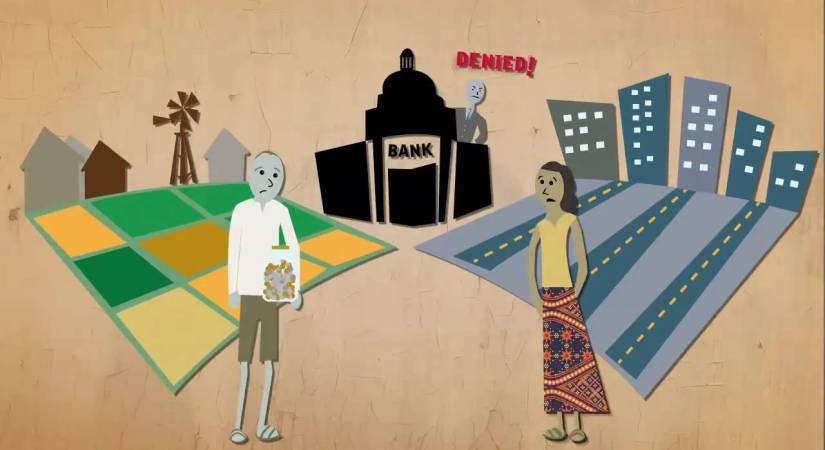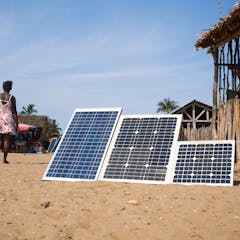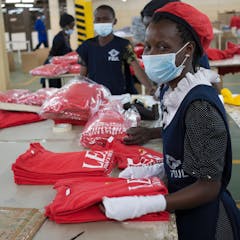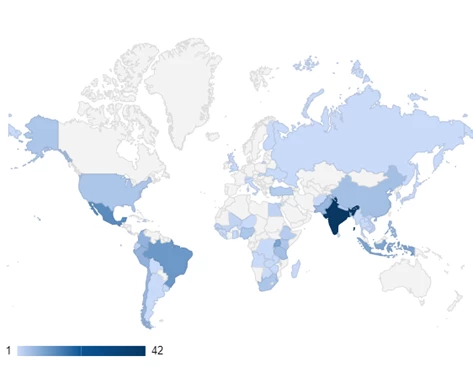Home » Blog » Dissertation » Topics » Economics » Development Economics » 99 Development Economics Research Topics | Dissertation Ideas


99 Development Economics Research Topics | Dissertation Ideas
By Adam Oct 8, 2023 in Development Economics , Economics | No Comments
Economic activity varies widely from region to region and is a crucial focus in development economics. Research topics in development economics cover a range of aspects related to income generation in developing nations, making it an essential area of study in academia. Whether you’re an undergraduate, master’s student or doctoral candidate, selecting a dissertation topic […]

Economic activity varies widely from region to region and is a crucial focus in development economics. Research topics in development economics cover a range of aspects related to income generation in developing nations, making it an essential area of study in academia. Whether you’re an undergraduate, master’s student or doctoral candidate, selecting a dissertation topic in Development Economics is critical to your academic success.
This Development Economics explores the complexities of economic progress, poverty reduction, and sustainable development and is often referred to as “Economic Growth,” “Global Development,” or “Economic Transformation.” This post provides a comprehensive overview of Development Economics, including many dissertation topics to inspire your research journey. So, let’s delve into this dynamic field and discover the numerous opportunities for academic exploration.
Download Development Economics Dissertation Sample
A list of development economics research topics:
The following is a list of research topics in development economics to help the learner choose a relevant topic and write his paper.
The role of foreign aid in fostering economic growth in Sub-Saharan Africa.
The effect of infrastructure development on regional economic disparities.
The impact of trade preferences on export diversification in developing countries.
National policies to promote specific regions and impact national development- China’s perspectives.
The effect of natural disasters on economic development in vulnerable regions.
The impact of agricultural policies on food security in developing nations.
The influence of natural resource abundance on economic diversification in resource-rich countries.
Investigating the relationship between healthcare expenditure and health outcomes.
Post-COVID healthcare system resilience and its effects on economic development.
The impact of trade preferences on agricultural exports from Sub-Saharan Africa.
Understanding the mechanics of budgeting and decision-making in poor households in emerging economies.
Investigating the influence of foreign aid on income inequality in Latin America.
Analyzing the impact of globalization on income distribution in emerging economies.
Evaluating the role of access to credit in entrepreneurship development.
A review of the economic consequences of natural resource mismanagement.
A review of the economic consequences of refugee crises.
The debate for development economics within higher education.
A review of the relationship between environmental sustainability and economic growth.
Investigating the role of infrastructure development in promoting economic growth.
Examining the impact of population ageing on economic development.
The role of foreign aid allocation strategies in achieving development goals.
Evaluating the impact of trade facilitation measures on export growth.
Investigating the relationship between financial development and economic stability.
The influence of trade liberalization on income inequality in emerging markets.
The influence of trade agreements on agricultural trade in the UK.
The determinants of high-performing institutions in a development economics context.
A review of the economic consequences of conflict and post-conflict reconstruction.
Examining the relationship between corruption and economic development.
The influence of political stability on foreign direct investment inflows.
Investigating the impact of transnational commodity trading through the development economic perspective.
A review of the economic implications of health epidemics.
Development economics- progress through field interventions or theoretical bases? An investigation.
The influence of institutional quality on foreign direct investment attraction.
The effect of climate change adaptation measures on economic resilience.
The impact of health system quality on healthcare access and outcomes.
Analyzing the effects of currency devaluation on export competitiveness.
Evaluating the effectiveness of public-private partnerships in infrastructure development.
Comparative economic patterns of villages across Europe- an investigation.
Post-COVID food security challenges and policy responses.
Post-COVID digitalization and its effects on financial inclusion.
Analyzing the role of foreign direct investment in technology transfer.
The impact of corporate governance on stakeholders’ firm valuation: A comparative review between developed and developing countries.
Measurement of poverty levels in the world- biased, random or concentrated efforts?
The effect of gender-based discrimination on economic development.
A review of the relationship between education and labour market outcomes.
The effect of land tenure systems on agricultural productivity.
The effect of education quality on human capital development in low-income countries.
Evaluating the effectiveness of poverty reduction programs in the UK.
The role of development aid in economic growth of developing economies- a review.
The impact of natural disasters on development economics in emerging economies.
Development economics- antecedents and current perspectives.
Post-COVID education system resilience and its impact on human capital.
Family planning, labour force and income fluctuations- investigating the relationship.
Examining the influence of trade openness on economic growth in East Asia.
The role of financial inclusion in poverty reduction: A case study in South America.
A review of the relationship between foreign aid and governance in Africa.
A comparative analysis of rural and urban development strategies in India.
The impact of globalization on income inequality in China.
Evaluating the effectiveness of microenterprise development programs.
Waste management through a socioeconomic perspective- review of the literature.
The impact of economic policies on financial integration in Europe- literature review.
The role of financial inclusion in economic development in the Middle East.
A review of the effectiveness of conditional cash transfer programs in Latin America.
Evaluating the influence of agricultural subsidies on food security.
Post-COVID healthcare infrastructure and its effects on healthcare access.
The influence of trade openness on industrialization in South Asia.
The impact of land reform policies on agricultural productivity.
The role of infrastructure investment in stimulating economic growth.
The role of small and medium-sized enterprises (SMEs) in economic development.
Analyzing the role of women’s empowerment in economic development.
Labour migration and development economics- investigating the relationship.
The impact of regional integration on trade and economic development.
The impact of globalization on income distribution in the UK.
Analyzing the effects of trade protectionism on global supply chains.
Examining the effects of export-oriented industrialization on job creation.
The role of renewable energy adoption in sustainable economic growth.
Post-COVID digital financial services and their impact on financial inclusion.
Evaluating the effectiveness of microfinance programs in poverty alleviation: A case study in the UK.
Post-COVID economic recovery strategies: A comparative analysis of developed and developing economies.
The effect of international migration on economic development in origin countries.
Analyzing the role of entrepreneurship in fostering economic development.
A review of the economic consequences of climate change in vulnerable regions.
Analyzing the effects of financial sector development on economic growth.
The connection between national economic growth and the financial sector- an analytical approach.
Analyzing the role of labour market policies in reducing informality.
Examining the influence of social safety nets on economic resilience during crises.
A review of the role of remittances in improving livelihoods in migrant-sending countries.
Analyzing the impact of foreign direct investment on economic development in Southeast Asia.
How do American multinationals integrate with domestic institutions for the economic development of the host nation?
The effect of urbanization on income distribution in developing countries.
The impact of infrastructure investment on access to healthcare and education.
Evaluating the role of foreign direct investment in Africa’s industrialization.
Post-COVID labour market dynamics: Implications for employment policies.
Analyzing the role of education quality in reducing income inequality.
The impact of population growth on development economics – review of India.
The impact of trade agreements on agricultural exports from developing countries.
Post-COVID supply chain disruptions and their economic implications.
A review of the economic implications of sustainable development goals (SDGs).
A review of the relationship between population growth and economic development.
There you go. Use the list of development economics dissertation topics well and let us know if you have any comments or suggestions for our topics-related blog posts for the future or want to get help with dissertation writing; send us an email at [email protected] .
Paid Topic Consultation Service
You will get the topics first as per the given requirements, and then the brief which includes;
- An explanation why we choose this topic.
- 2-3 research questions.
- Key literature resources identification.
- Suitable methodology with identification of raw sample size, and data collection method
- View a sample of topic consultation service
Get expert dissertation writing help to achieve good grades
By placing an order with us, you can get;
- Writer consultation before payment to ensure your work is in safe hands.
- Free topic if you don't have one
- Draft submissions to check the quality of the work as per supervisor's feedback
- Free revisions
- Complete privacy
- Plagiarism Free work
- Guaranteed 2:1 (With help of your supervisor's feedback)
- 2 Instalments plan
- Special discounts
Related Posts
- 99 Public Economics Research Topics | Dissertation Ideas February 26, 2018 -->
- 99 Monetary Economics Research Topics | Thesis Ideas February 23, 2018 -->
- 99 Managerial Economics Research Topics | Dissertation Ideas February 21, 2018 -->
- 99 Experimental Economics Research Topics | Dissertation Ideas February 20, 2018 -->
- 99 Agricultural Economics Dissertation Topics | Research Ideas February 19, 2018 -->
- 99 Economic Geography Dissertation Topics | Research Ideas February 19, 2018 -->
- 99 Business Economics Dissertation Topics | Research Ideas January 30, 2018 -->
- 99 Financial Economics Dissertation Topics | Research Ideas January 27, 2018 -->
- 99 Health Economics Dissertation Topics | Research Ideas January 26, 2018 -->
- 99 Environmental Economics Dissertation Topics for Research January 25, 2018 -->
- 99 Behavioural Economics Dissertation Topics | Research Ideas January 25, 2018 -->
WhatsApp us
- Browse All Articles
- Newsletter Sign-Up
DevelopmentEconomics →
No results found in working knowledge.
- Were any results found in one of the other content buckets on the left?
- Try removing some search filters.
- Use different search filters.
Featured Topics

View the Entrepreneurship Working Group page.

Econometrics
Microeconomics, macroeconomics, international economics, financial economics, public economics, health, education, and welfare, labor economics, industrial organization, development and growth, environmental and resource economics, regional and urban economics, more from nber.
In addition to working papers , the NBER disseminates affiliates’ latest findings through a range of free periodicals — the NBER Reporter , the NBER Digest , the Bulletin on Retirement and Disability , the Bulletin on Health , and the Bulletin on Entrepreneurship — as well as online conference reports , video lectures , and interviews .

Articles on Economic development
Displaying 1 - 20 of 132 articles.

Industrialisation is still vital to economic development but some countries are struggling to reap its benefits
Jostein Hauge , University of Cambridge

Poor men south of Richmond? Why much of the rural South is in economic crisis
Peter A. Coclanis , University of North Carolina at Chapel Hill and Louis M. Kyriakoudes , Middle Tennessee State University

India could soon be the world’s third biggest economy – NZ needs to build the trade relationship urgently
Rahul Sen , Auckland University of Technology

How Indigenous economic development corporations can support a just, low-carbon energy transition
Christina E. Hoicka , University of Victoria and Matthew Foss

Tribes in Maine left out of Native American resurgence by 40-year -old federal law denying their self-determination
Joseph Kalt , Harvard Kennedy School ; Amy Besaw Medford , Harvard Kennedy School , and Jonathan B. Taylor , Harvard Kennedy School

Community-based economic development is the key to a strong pandemic recovery
Audrey Jamal , University of Guelph

Expanded access to solar power in Africa can stimulate economic development – but there are risks
Ben Radley , University of Bath

Street traders in South Africa play a vital role: how their rights can be protected
Nonhlanhla Ngcobo , North-West University ; Anél du Plessis , North-West University , and Oliver Fuo , North-West University

What drives Chinese migrants to Ghana: it’s not just an economic decision
Jinpu Wang , Syracuse University

Small oil producers like Ghana, Guyana and Suriname could gain as buyers shun Russian crude
Jennapher Lunde Seefeldt , Augustana University

Got $1.2T to invest in roads and other infrastructure? Here’s how to figure out how to spend it wisely
Anna Nagurney , UMass Amherst

South African local government elections: why a great deal hangs on the outcome
Dirk Kotze , University of South Africa

Municipalities can play a key role in South Africa’s economic development. Here’s how
Johann Kirsten , Stellenbosch University and Helanya Fourie , Stellenbosch University

COVID: poorest countries should have stopped short of full workplace closures – economist
Mehdi Shiva , University of Oxford

If China’s middle class continues to thrive and grow, what will it mean for the rest of the world?
Amitrajeet A. Batabyal , Rochester Institute of Technology

Pandemic recovery will take more than soaring growth – to fuel a more equitable economy, countries need to measure the well-being of people, too
Bas van Bavel , Utrecht University and Auke Rijpma , Utrecht University


Many African countries had a surprise manufacturing surge in 2010s – it bodes well for the years ahead
Gaaitzen de Vries , United Nations University ; Emmanuel B Mensah , University of Groningen ; Hagen Kruse , University of Groningen , and Kunal Sen , United Nations University

Why the EU’s global fishing activities can’t be called sustainable yet
Andrew Frederick Johnson , Heriot-Watt University and Ingrid Kelling , Heriot-Watt University

The Indigenous people of Urat village in Lake Toba have been left out of rural tourism development
Ringkar Situmorang , Universitas Multimedia Nusantara ; Arnold Japutra , The University of Western Australia , and Teddy Trilaksono , Universitas Prasetiya Mulya

In changing urban neighborhoods, new food offerings can set the table for gentrification
Joshua Sbicca , Colorado State University ; Alison Alkon , University of the Pacific , and Yuki Kato , Georgetown University
Related Topics
- Development
- Economic growth
- Global perspectives
- Manufacturing
- Peacebuilding
- South Africa
- Sustainable development
Top contributors
Professor of Rural-Urban Policy, The Ohio State University
Assistant Professor in Development Studies, University of Cambridge
Associate Vice President (External Engagement); Chair Professor of Business Analytics;, University of Surrey
Senior Lecturer in International Business, Birkbeck, University of London
Professor and Eugene M. Isenberg Chair in Integrative Studies, UMass Amherst
Research Fellow, The Australasian Centre for Resilience Implementation for Sustainable Communities, Charles Darwin University
Academic Director, School for International Training, The University of Melbourne
Professor of Environment and Society, University of Essex
Research Fellow New South Institute, Emeritus Professor at The Nelson Mandela School of Public Governance, University of Cape Town
Assistant Professor of Human Development and Family Science, The Ohio State University
Visiting Assistant Professor, University of Arizona
Professorial Fellow, University of Canberra
Lecturer and Researcher, School of Social Sciences, Monash University
Professor of Sport and Geopolitical Economy, SKEMA Business School
Emertius Professor, University of Tasmania
- X (Twitter)
- Unfollow topic Follow topic

What’s the Latest Research in Development Economics? A Round-up from NEUDC 2020
David evans, almedina music.
Last weekend was the North East Universities Development Consortium annual conference , hosted by Dartmouth University but held virtually. Researchers presented about 225 papers (about a 50 percent increase from last year’s conference ) on a wide range of development topics, from agriculture and credit to tax and transport. For those not able to attend or who want a refresher, we’ve prepared a brief takeaway from each paper (or in some cases, abstract) that we could find online.
Remember that research is much more than a tweet-sized takeaway (and these takeaways are ours, not necessarily the authors), so if you’re interested in a result, we encourage you to read the linked papers. For as many of the papers for which we could easily discern and characterize it, we included a methodological hashtag. A guide to those hashtags is at the end of the post . We’ve sorted the papers by topic below, but in case you’re interested in reading about all the research from a given country or region, you can also find the research sorted that way .
Before we dive into the content of the papers, here are a few statistics. About a quarter of the papers are from each of three regions: Latin America and the Caribbean, South Asia, and Sub-Saharan Africa. Only two percent of papers are from the Middle East or North Africa. In terms of country coverage, India—with 42 studies—had three times as many studies as the next most studied countries (Mexico and Brazil, with 13 studies and 11 studies), as you can see in the figure below. One in four papers (58 studies total) report on a randomized controlled trial, with lots of quasi-experimental methods in use as well: difference-in-differences, regression discontinuity, fixed effects, and instrumental variables are each used by more than a dozen papers.
Figure: Distribution of papers from NEUDC 2020 by country

If we missed a paper or if you had a different takeaway from a paper, share your thoughts in the comments! Both of us had the papers we submitted rejected by the conference, so we summarize those at the bottom.
Households and human capital
Early childhood.
· Climate change increases acidification of the ocean, which reduces available fish. For babies in utero, that means more deaths, especially for the weakest kids. ( Armand and Kim Taveras ) #FE
· When one child is born smaller than another, do parents compensate for those differences with health and nutrition investments, or do they reinforce them? Evidence from Indonesia suggests that in early childhood, parents reinforce differences. Data from 50 countries suggest parents are more likely to “reinforce initial inequalities in poorer countries.” ( Banerjee and Majid ) #FE
· A play-based preschool curriculum in Bangladesh together with monthly teacher-parent meetings to boost parenting skills led to improved child cognitive and socioemotional development. Even for kids who switched from existing preschools, their socioemotional skills improved. ( Rodriguez and Saltiel ) #RCT #ML
· Home visits to educate parents about feeding in Peru decreased anemia among children who were anemic at baseline but apparently increased it among those who weren’t (and no, it’s not just mean reversion), potentially because some parents misinterpreted messages from the visitors. ( Barron, Castro, and Lavado ) #RCT
· Helping secondary students in Zanzibar (Tanzania) to set goals for improvement on math tests led to better reported time use but not better test scores. These intermediate gains are largest for girls. ( Islam et al. ) #RCT
· If you took the Indonesian secondary school entrance exam on a particularly hot day, it not only affects your math and science score, it also has “compounding negative effects on a wide range of long-term achievements such as adult educational attainment, labor market returns and entry to the marriage market.” ( Das ) #IV
· During the Pinochet dictatorship, funding for universities in Chile fell. Decades later, children of parents affecting by the reduced university spaces were themselves less likely to enroll in college. ( Bautista et al. ) #RD (actually a Regression Kink Design )
· With data on undergraduate students in India in the process of choosing a major, this paper finds that “women are willing to pay twice as much as men for course enjoyment and higher grades, even as they expect lower grades in science and economics.” ( Dasgupta and Sharma )
· Does providing e-readers to students in Lagos, Nigeria, boost test scores? Only if the devices had materials from the curriculum and were filling a gap in textbooks. ( Habyarimana and Sabarwal ) #RCT
· In Mexico, providing “information to parents about how to support their children’s learning” improved parent behavior at home and student behavior at school. In a separate experiment, providing “financial resources to parent associations” had no behavioral impact. Neither improved student test scores. ( Barrera-Osorio et al. ) #RCT
· Two different interventions to make school principals in Salta (Argentina) more effective had no impact during the intervention, but in the two years after the intervention concluded, fewer students repeated grades. “Good things come to those who wait.” ( de Hoyos, Ganimian, and Holland ) #RCT
· What happens when your local school closes in China due to a school consolidation program? Delayed enrollment, but no change in lifetime education attainment. Later in life, it may have led to later marriage and more off-farm work. ( Zhao ) #DID
· In Pakistan, “both high value-added teachers and teachers who respond more strongly to
incentives significantly prefer performance pay and sort into” school where performance pay is on offer. ( Brown and Andrabi ) #RCT
· A teacher professional development for secondary school teachers in Rwanda boosted use of active instruction but did not increase students’ “academic outcomes or skills.” ( Blimpo and Pugatch ) #RCT
· Across 15 African countries, there is lots of variation in how much teachers are paid relative to other workers with comparable education and experience. However, on average across the countries, teachers are paid about the same per month and somewhat more per hour. ( Evans, Yuan, and Filmer ) You can read the authors’ blog post about the paper here.
· Training teachers in targeted instruction in Ghana boosted student learning. Adding training for managers boosted the quality of management but didn’t further improve learning for students. ( Beg, Fitzpatrick, and Lucas ) #RCT
· Winning a lottery increases the willingness to pay for remedial education services much more for those who aren’t able to borrow money than for those who are. “Credit constraints limit access to educational programs” in Tanzania. ( Burchardi et al. ) #RCT
· School-based “internet access has a modest, positive short-run impact on school-average standardized test scores” in Peru, and the “effect grows over time.” ( Kho, Lakdawala, and Nakasone ) #ES
· After three years, on-site, in-person coaching had much broader impacts than coaching delivered through a tablet in South Africa. ( Cilliers et al. ) #RCT [You can also read Dave’s blog post on this paper.]
· “A multi-faceted program that integrates technology into education, provides ongoing teacher training and professional development, includes community ownership, and offers free primary education” boosts reading and math scores in rural Zambia. ( de Hoop et al. ) #RCT
· Providing computers and computer-assisted learning software to primary schools in Angola led to falls in teacher absenteeism and rises in student and teacher technological familiarity; but student learning didn’t rise. ( Cardim, Molina-Millán, and Vicente ) #RCT
· Do stereotypical beliefs of teachers affect learning outcomes of girls in India? “A standard deviation increase in biased attitude of the math teacher widens the female disadvantage in math performance by 0.07 SD over an academic year.” (Rakshit and Sahoo)
· In China, “high-ability students have detrimental effects on their high-ability roommates’ performance.” This is likely driven by competition lowering help and interaction among roommates. (Hu and Chen)
· Sex education provided by near-peers in Botswana reduced pregnancy by over 40 percent whereas government teachers had a null effect and potentially increased pregnancy. (Angrist) #RCT
· When a college in China changes its name, it enrolls applications with 0.06–0.08 SD higher college entrance exam scores, equivalent to a college improving their ranking by 40 to 50 places. There is a small benefit for listing the college’s new name in employers’ recruitment decisions. (Eble and Hu)
· Can information about jobs improve the effectiveness of vocational training? An experiment based on the DDU-GKY, a large-scale training program in India, showed that better informed trainees are 17 percent more likely to stay in the job in which they are placed. (Chakrarvorty et al.) #RCT
· Land reform 50 years on: population levels in Kenya are higher in the settlement schemes than in neighboring areas. School provision is at par with population levels, indicating that there is no impact of the reform on this public good in the long run. (Crespin-Boucaud, Boone, and Moradi) #RD
· Households in Bolivia that became eligible for a pre-existing, near-universal pension program during the COVID crisis were much less likely to go hungry. ( Bottan, Hoffman, and Vera-Cossio ) #RD
· “A fter Brazil’s president publicly and emphatically dismissed the risks associated with the COVID-19 pandemic and advised against isolation, the social distancing measures taken by citizens in pro-government localities weakened compared to places where political support of the president is less strong.” Especially in municipalities with more active Twitter accounts! ( Ajzenman, Cavalcanti, and Da Mata ) #FE
· In Ethiopia, despite worries about food insecurity in the wake of COVID-19, “food consumption and household dietary diversity are largely unchanged or slightly increased by August 2020” relative to a year previously. ( Hirvonen, de Brauw, and Abate )
· Lockdowns among adults aged 65+ in Turkey worsened mental health outcomes due to a large increase in social and physical isolation. (Altindag, Erten, and Keskin) #RD
· In Kenya, the COVID-19 pandemic drove over 20 percent of traders out of business and disrupted supply chains, while most cross-border traders switched to being domestic traders. Remaining traders rely on informal borders, with an increase in bribes paid and more frequent harassment by officials and the police. (Wiseman)
· Adding nutrition education to a cash and food transfers in Bangladesh boosted both the quantity and quality of food consumed more than transfers alone. ( Tauseef ) #RCT
· A locust plague in Mali affected people in two ways. Prices went up in the short run because people knew the harvest would be smaller. “Children exposed in utero to the adverse effects of the locust plague suffer major health setbacks.” ( Conte, Piemontese, and Tapsoba ) #DID
· One potential advantage of in-kind transfers relative to cash is that they serve as insurance against food price changes. For poor households in India, in-kind food transfers do a better job of reducing calorie shortfalls than cash. ( Gadenne et al. ) #FE
· What’s the impact of double-fortified salt on schoolchildren’s health in India? After both one year and four years of exposure, anemia rates fall. ( von Grafenstein et al. ) #RCT
· “Low soil zinc availability drives child stunting in Nepal.” The authors do a bunch of robustness checks to make sure it’s not all driven by unobserved characteristics. “Our most conservative estimates suggest that on average, moving from [low zinc] to [high zinc] soils … reduces child stunting by 6 percentage points.” ( Bevis, Kim, and Guerena ) #FE
· School feeding in Rwanda boosted student learning and closed gender gaps. “Back-of-the-envelope calculations suggest that providing school feeding yields an 11:1 return on investment.” ( Mensah and Nsabimana ) #DID
· Should the government sell you goods? “In the absence of government milk in Mexico, private market prices would be 3% higher.” Direct provision generates gains in consumer welfare of 4 percent relative to milk vouchers and 2 percent relative to unrestricted cash transfers. (Jim é nez-Hern á ndez and Seira)
· A review of 34 mental health interventions in low- and middle-income countries shows positive impacts on economic outcomes, especially interventions that combine psychosocial and pharmacological elements. ( Lund et al. )
· What is the impact of an epidemic outbreak on votes? In Mexico after the 2009 H1N1 outbreak, researchers find “ a strong, negative relationship between the magnitude of the local epidemic outbreak and the governing party vote share in the 2009 congressional election.” There were persistent effects in the 2012 election. ( Guti érrez, Meriläinen, and Rubli ) #DID
· Towns headed by Indian (as opposed to British) district officers in India experienced 15 percent lower deaths during the 1918 Influenza pandemic, coinciding with greater responsiveness in relief provision. (Xu)
· Some US states have laws that require health insurers to cover telehealth services. Those laws have little average impact on telehealth use, but for a subset of users, they decrease medical spending and emergency room visits. ( Jamal ) #IV #ML
· “Using manipulated portraits (thinner/fatter) of real Kampala [Uganda] residents, I first show that obesity is perceived as a reliable wealth signal.” Then, in a “real-stakes field experiment,” the research shows that “obese borrowers have easier access to credit: going from normal weight to obese is equivalent to increasing one’s income by 60 percent.” ( Macchi ) #RCT
· Preventive healthcare appointments are common in rich countries but not in poor countries. In Malawi, both the offer of HIV testing appointments and financial commitment devices increase HIV testing among high-risk men, but appointments are much more effective. ( Derksen et al. ) #RCT
· Some community health workers in Pakistan watched a video and a discussion about the mission of their work: their performance improved on a range of tasks. Some workers received financial incentives: their performance improved only on the incentivized tasks. ( Khan ) #RCT
· Introducing public pharmacies in Chile “increased consumer savings and mayors were politically rewarded in the upcoming election.” ( Atal et al. ) #ES #RCT
· When public health systems contract private hospitals, how do hospitals react? In India, “hospitals engage in substantial coding manipulation order to increase their revenues.” Also, “hospital charges for care that is supposed to be free are pervasive.” ( Jain and Dupas ) #DID
· Are non-financial incentives effective to motivate community health workers? Providing an honorary award at a public ceremony boosted performance, with impacts on child health. Showing a video that demonstrates the consequences of health worker choices was less effective. ( Fracchia, Molina Millán, and Vicente ) #RCT
· A law that banned female genital cutting in Senegal reduced the prevalence of the practice and increased investments in girls’ education. ( Hombrados and Salgado ) #DID
· Married women in India are much less likely to make more than their husbands than they are to make just a little bit less than their husbands, suggesting a strong social norm and that some women are earning less than they could. ( Gupta )
· In India, “ women who paid higher dowries are less likely to be poor relative to women who did not, even when their household incomes are the same.” The surprising implication is that “anti-dowry laws may have the unintended effect of increasing female poverty. ” ( Calvi and Keskar )
· How does women’s employment affect technology adoption? In the United States when lots of women went to work in factories during World War II, rising employment led to more home appliances. For women who had kids, that meant more washing machines. ( Bose, Jain, and Walker ) #IV
· Women entrepreneurs in urban Bangladesh who receive cognitive behavioral therapy (which includes goal-setting, time-management, and problem-solving strategies) experience reduced stress and lose less work time solving problems at home, but profits stay the same. ( Lopez-Pena ) #RCT
· Women in Bogota, Colombia are willing to pay for flexible work schedules, especially women with higher incomes, suggesting that “flexibility is a luxury good.” ( Bustelo et al. ) #LIF
· For gig economy workers in India, receiving criticism worsens worker attitudes but increases their effort. Praise affects neither. It doesn’t make a difference whether the manager giving feedback is a woman or a man. ( Abel and Buchman ) #RCT
· Among “jobseekers in Egypt, women are more sensitive to long commutes, and value flexible schedules and on-site daycare more than men.” ( Feld, Nagy, and Osman ) #RCT
· Are female-led communities differentially affected by conflict? In Colombia, municipalities where a female mayor was elected experienced a 60 percent decrease in guerrilla attacks. Female negotiation skills could explain the drop in conflict violence. (Eslava) #RD
· A gender quota among Muslim leaders in Uttar Pradesh, India has a large and positive effect on toilet provision (across both Muslim and Hindu households), while with Hindu leaders there is no average affect. (Chaturvedi, Das, and Mahajan) #RD
· A school-based intervention in India with classroom discussions to reduce adolescents’ support for restrictive gender norms “converted 16% of participants’ regressive views.” Self-reported behavior became more aligned with progressive gender norms, particularly among boys. (Dhar, Jain, and Jayachandran) #RCT
· Registering sugarcane blocks in the wife’s name in Uganda improves two dimensions of women’s economic empowerment: access to resources and agency, with marginal impacts on personal welfare outcomes. In contrast, a behavior change intervention has strong impacts on personal welfare impacts. (Ambler, Jones, and O’Sullivan) #RCT
· “A one time large unconditional cash transfer (in rural Kenya) improves women’s control of household resources but not the frequency of physical and sexual intimate partner violence. Combining a light touch psychological intervention targeting self-believes with the cash transfer reduces the violence index by 0.14 SD.” (Mahmud, Orkin, and Riley) #RCT
· Benefiting from the Pantawid Pamilyang Pilipino Program, a conditional cash transfer program in the Philippines, at the critical age between 12.5 and 14 years delays marriage and first birth by 1 year and 6 months, respectively. (Dervisevic, Perova, and Sahay)
· “A large share of the gender pay gap in Brazil is due to women working at lower-paying employers.” There are sizable output and welfare gains from moving to a gender-neutral economy, but analysis suggests that equal-treatment policies fail to close the gender gap in equilibrium. (Morchio and Moser)
· In South Korea, a glass ceiling for women exists: “the (large) unexplained gender wage gap substantially increases at the upper end of the wage distribution.” Effects of marriage and childbirth also explain the dramatic increase in the gender wage gap for women in their 30s and 40s. (Lee)
· A program aiming at reducing intimate partner violence (IPV) in Rwanda increased violence. “The program may have increased violence because men backlashed against the perceived threat to their identity posed by program messages about women’s empowerment, and against their wives’ more progressive gender attitudes and aspirations. (Cullen et al.) #RCT
· Sexual crimes, lapses in alimony, and domestic violence declined during the COVID-19 stay-at-home order in Mexico, and then rose back to their pre-COVID levels. Femicides remained constant during the pandemic, but declined in municipalities with alcohol sales prohibition. (Hoehn-Velasco, de la Miyar, and Silverio Murillo)
· “Providing poor women in rural Bangladesh with cash or food transfers, alongside nutrition behavior change communication, led to sustained reductions in” intimate partner violence. (Roy et al.) #RCT
· Amendments to the Indian anti-dowry law were successful in decreasing dowry payments. They also led to exposed women being 2.6 percentage points less likely to be in involved in household decisions, and a 1.9 percentage points increase in the probability of domestic violence. (Calvi and Keskar)
· Sexual harassment awareness trainings in India increased awareness among men by 0.106 SD, and decreased reported physical forms of sexual harassment among women by 0.125 SD. (Sharma) #RCT
· In China, only the majority ethnic group was subject to birth quotas, but birth rates fell among other ethnic groups as well. “A woman gives birth to 0.65 fewer children if the average completed fertility among her peers is exogenously reduced by one child.” ( Rossi and Xiao ) #IV
· In the past, some ethnic groups across African countries practiced twin infanticide. Today, twin mortality is no higher for those groups than for other others. Phew. Uses data from 23 countries. ( Fenske and Wang ) #FE
· African women in former British colonies tend to marry later and have lower fertility than women in former French colonies. But those effects tend to disappear close to the sea, where market access is higher. ( Canning, Mabeu, and Pongou ) #RD
· “I n societies characterized by the co-existence of strong son preference and worse maternal health conditions, women with first-born girls exhibit a lower likelihood of survival into older ages. This is likely due to harmful fertility behaviors after the birth of a daughter. ” ( Agarwal and Milazzo )
Households and marriage
· Parents in Bangladesh see that their children are biased toward the present and are willing to pay to restrict their kids’ choices and—ultimately—may be able to mold their children’s preferences. ( Kiessling et al. ) #LIF
· A lab experiment in rural Togo suggests that men in rural farming households put less investment into their wives’ farm plots than would maximize household agricultural production. ( Apedo-Amah, Djebbari, and Ziparo ) #LIF
· An earthquake in Gujarat (India) reduced men’s and women’s ages at marriage but increased the education gap in marriages and lowered women’s likelihood of entering into self-arranged marriages. ( Das and Dasgupta ) #DID
· Floods in Bihar, India reduced both men’s and women’s ages at marriage and—for married women—decreased the secondary school completion rate and labor force participation. It was more pronounced among groups for which dowry is the norm and among the landless, so dowry may have been helping to smooth consumption. ( Khanna and Kochhar ) #DID
· An education reform in Zimbabwe increased women’s education and led them to marry more educated men. Since the increase in women’s education was greater, the education gap narrowed. ( Salcher ) #RD
· Bans on cousin marriage in the US led to descendants with more education and higher labor force participation. ( Ghosh, Hwang, and Squires ) #IV
Migration and refugees
· In low-income countries, richer people are the ones who emigrate: “In low-income countries, people actively preparing to emigrate have 30 percent higher incomes than others overall, 14 percent higher incomes explained by observable traits such as schooling, and 12 percent higher incomes explained by unobservable traits.” ( Clemens and Mendola )
· Research with “Filipino migrants in the UAE and their spouses in the Philippines” shows that “both migrants and spouses have biased beliefs about each other’s finances and these biases are the result of strategic misreporting. Spouses and certain subgroups of migrants underreport their income to influence the remittance decision in their favor.” ( Rehman ) #LIF
· In municipalities of Brazil with more immigrants historically, both the descendants of the immigrants and others have higher wages. ( Cenci, Lopes, and Monasterio ) #FE
· “Do migrant incomes catalyze economic development back home?” In the Philippines, yes: “Positive migrant income shocks lead to higher household consumption and higher asset ownership in origin areas a decade later.” ( Khanna, Theoharides, and Yang ) #FE #IV
· “Refugees who have access to a larger co-refugee network tend to have more interactions with the local population” among Syrian refugees in Turkey. This is likely because “immigrant networks share experiences and information on the local population, therefore making it easier for refugees to interact with locals.” ( Gautier ) #IV
· “Why do migrants embark on dangerous border crossing journeys? … Migrants [from Mexico] with poor long term economic prospects at home are more tolerant of crossing places offering high reward and high risks.” ( Chau, Garip, and Oritz-Bobea ) #IV
· Migration prohibitions for women in Sri Lanka—based on age and on age of youngest child—had impacts on fertility. Young women increased their fertility; older women reduced their fertility. “As a result, new mothers are less-educated and younger, which may have an impact on child outcomes.” ( Peru ) #RD
· Palm-oil price shocks in Indonesia benefit producing districts with higher per capita expenditure, while price shocks on rice do not. Districts exposed to palm-oil price shocks and those surrounding them receive more migration resulting in an overall welfare increase of 0.39 percent, with one third due to internal migration. (Siregar)
Working and saving
Banking and credit.
· In India, some urban centers have too many bank branches, and some rural areas have too few, so banks could reallocate branches and increase access without much or any decrease in deposits. ( Hawkins-Pierot )
· More banks in rural India make it easier for households to deal with tough times like bad harvests: “Households that experience shocks but have access to banking services are better off with respect to consumption compared to those that have to cope without access.” ( Cramer ) #RD
· Informal moneylenders in rural India use loans from formal financial institutions as capital to make loans to households. ( Surendra ) #FE
· Giving informal savings groups access to loans from formal banks in Uganda increased food security but also led to more group turnover. ( Burlando, Etcheverry, and Goldberg ) #RCT
· Providing rural households with access to a mobile money agent in Uganda increased food security and self-employment off of farms, mostly through peer-to-peer transfers and lower costs in accessing remittances (e.g., they didn’t have to travel to get the money). ( Wieser et al. ) #RCT
· How does the disbursement of microfinance loans via mobile money impact borrowers’ businesses in Uganda? “Women who received their microfinance loan on the mobile money account had 15% higher business profits and 11% higher levels of business capital.” (Riley) #RCT
· Is the type of financial support provided to businesses more important than which businesses receive it? In Egypt, those who succeed with loans are equivalent to those who succeed with grants, showcasing that owner heterogeneity is more important than the type of support received. (Cr épon, El Komi, and Osman) #RCT
· Flexible repayment schedules reduce high social pressure among microcredit borrowers in the Philippines but come at a cost of reduced loan repayment. (Czura, John, Spantig) #LIF
· In Pakistan, microenterprises with hire-purchase contracts “are more likely to remain in self-employment, run larger businesses, and enjoy higher profits.” As a result, their households increase spending on food and children’s education. (Bari et al.) #RCT
· In Chile, low-income individuals receiving messages about how to prevent and face shocks, and how to face present bias and social comparison, combined with additional messages about options that individuals at risk of defaulting could take, decreased loan delinquency probability between 20 and 32 percent. (Álvarez, Miranda, and Ruiz-Tagle) #RCT
· “Doubling the delivery time [of digital credit] from ten to twenty hours reduces the default rate by 20%” in Mexico. (Burlando, Kuhn, and Prina) #RD
· Lottery players tend to bet less on numbers that recently won, suggesting a default “gambler’s fallacy” bias. 6.3 percent of players in Haiti and 15.7 percent in Denmark choose “hot” numbers — those which were winners in the previous round. There is no evidence of “streak switching”—in which beliefs switch from gambler’s fallacy to hot hand fallacy as streaks increase. (Dillon and Lybbert)
· Receiving monthly wages into either a bank or a mobile money account increased savings and improved coping with unanticipated economic shocks among factory workers in Bangladesh. (Breza, Kanz, and Klapper) #RCT
Cash transfers
· Households that benefitted from a multiyear cash transfer program in rural Niger have more savings and more earnings from both agricultural and non-agricultural activities. As a result, they have higher consumption even in the face of drought. ( Premand and Stoeffler ) #RCT
· Cash transfers in rural Mali help “low-income households to invest in profitable endeavors outside of subsistence agriculture and may reduce the marital migration of women in vulnerable households.” ( Hidrobo, Mueller, and Roy ) #RCT
· Cash transfers in Brazil reduced formal labor supply at the individual level, but because of the extra cash in the local economy, they actually lead a net positive impact on overall local labor supply. ( Gerard, Naritomi, and Silva )
· If households find out that they’re going to receive a cash transfer with more time to anticipate and plan, they’re more likely to save the money. ( Thakral and Tô ) #RCT
· Voters in Kenya (correctly) do not attribute a cash transfer program to local leaders, and receiving a cash transfer does not affect household’s voter turnout, vote choice, or favorability ratings of candidates. (Orkin and Walker) #RCT
Firms and microenterprises
· Firms of disadvantaged castes have a higher average revenue product of capital. Across-caste dispersion is concentrated in financially underdeveloped regions in India and the majority can be explained by differences in access to credit which reduces aggregate TFP by 6-10 percent. (Goraya)
· Charging higher prices for business training in Jamaica screens out poorer business owners, selects those who expect to benefit from it, and increases attendance among those who do pay . (Maffioli, McKenzie, and Ubfal)
· Firms in rural Tanzania with access to a digital phone book (lowering the cost of accessing new business and customer networks) “increase relational contracting with their suppliers and decrease it with their customers,” suggesting an improved bargaining position of firms relative to their pre-existing customers and suppliers. (Rudder) #RCT
· In Chile, mentoring improves mentee’s business practices but not their business survival, profits or income. Two success factors matter most: the time that the mentor has available, and the size of her network. (Lafortune, Martin, and Tessada)
· Indonesian firm-level data shows that democratization increases firm productivity, a critical determinant of economic growth. (Abeberese et al.) #DID
· The expansion of special economic zones in Vietnam (from 73 to 450 between 2000–2007) had little impact on increases in employment, number of firms, output, or output per worker. (McCaig et al.) #DID
· English training to domestic middle managers in Myanmar increases frequency of communication with their foreign managers, and trained managers perform better in management exercises. Employers value candidates with both higher English ability and multinational corporation experience. (Guillouet et al.)
· Access to premium recruitment services (increasing the supply of applicants) to firms in India increases “employer interest in applications.” Combining access to premium services with access to identity verification services increases actual hiring and leads these firms to employ a higher fraction of employees hired through the platform. (Fernando, Singh, and Tourek) #RCT
· How do firms respond to insecurity in Afghanistan? “Terrorist attacks reduce firm presence by 4-6% in affected districts… After violence, employees in provincial capitals are 33% more likely to move to Kabul and 15% more likely to exit the province.” (Blumenstock et al.)
· In Brazil, the probability of criminal prosecution increases by 23 percent upon job loss and remains constant. Unemployment benefits offset potential crime increases, especially for liquidity-constrained individuals. This effect completely vanishes upon benefit expiration. (Britto, Pinotti, and Sampaio) #RD
· How does information and publicity of human right abuses impact those firms tied to an abuse? “Firms associated with an assassination (of civil society activists) have large, negative abnormal returns following the event.” (Kreitmeir, Lane, and Raschky)
· “Firms exogenously exposed to the Drug War [in Mexico] experience lower export growth”, as resources went from production to protection and eroded local capacity to attract capital investment. ( Gorr ín, Morales-Arilla, and Ricca )
· How do multinationals affect development in the long run? In Costa Rica, regions under control of the United Fruit Company were 29 percent less likely to be poor than nearby locations in 1973, with only 56 percent of the gap closing over the following four decades. “The firm increased aggregated welfare by 3.7% and this effect is increasing in worker mobility.” (Méndez-Chacón and Van Patten) #RD
· Among firms along the manufacturing supply chain in Ecuador, “bilateral trade is estimated to be inefficiently low in early periods of the relationship.” ( Brug ués )
· Localized conflict in the Ukraine decreased sales by at least 5.8 percent outside of violent areas due a propagation effect (affecting firms’ buyers and suppliers) and a change in the production network structure. (Korovkin and Makarin)
· A contracting arrangement between producers and buyers that bundles price premium certainty with training and credit for a quality-improving technology induced producers in Senegal to purchase and use the technology. Producers are also more likely to produce higher-quality products (groundnuts) with increased output sales to the cooperative. (Deutschmann, Bernard, and Yameogo) #RCT
· Informal insurance is prevalent in rural India but has serious limitations, since it depends on members not getting hit by the same adverse shock. But if the same communities control cooperative irrigation schemes, then the irrigation and insurance institutions can be mutually supporting. ( Mazur )
Labor (including child labor)
· “At least 23% of self-employment in lean months occurs because workers cannot find jobs” in India. ( Breza, Kaur, and Shamdasani )
· “Increased early life investment reduces schooling in districts with high child labor, especially for girls and lower castes” in India. ( Bau et al. ) #FE #IV
· Including information of being a recipient of a Beca 18—a merit-based scholarship provided to poor students in Peru to pursue college education—in a résumé “increases the likelihood of getting a callback for a job interview by 20%.” (Ag ü ero, Galarza, and Yamada) #RCT
· Labor market discrimination among Slovaks towards the Roma minority is prevalent at both margins, and more so at the extensive margin. (Mani) #LIF
· For men that graduated from college during the public-sector hiring freeze in Tamil Nadu, India, the likelihood of being unemployed increased by about 32 percent. The application rate jumped by about 20 times for the few recruitments that were conducted. (Mangal) #DID
· The “employment impacts of a small cash grant, information and psychological support are close to zero,” but optimized targeting, i.e. offering the best possible intervention to each group, “raises employment (among Syrian refugees in Jordan) by a 1 percentage point (a 20% gain).” (Caria et al.) #RCT
· Training job seekers in South Africa to join and use an online professional networking platforms increases their end-of-program employment rate from 70 percent to 77 percent. (Wheeler et al.) #RCT
· An “SMS-based messaging app that connects agricultural workers and employers” in Tanzania “reduces within-village wage dispersion by 16-40 percent.” ( Jeong ) #RCT
· “Workers (in Israel) are 3-4 times more likely to find employment in firms where their parents have professional connections.” Connections matter for inequality: “the wage gap between Arabs and Jews decreases by 12% when equalizing the groups’ connections but increases by 56% when prohibiting the hiring of connected workers.” This is because “Arabs have connections to lower-paying firms, but use their connections more extensively.” (San)
Governments, institutions, and conflict
Bureaucracy and politics.
· Sending scorecards measuring delays in service delivery to government officials and their supervisors in Bangladesh increased services delivered without delay by 11 percent. (Mattsson)
· The 1883 Pendleton Act—requiring US customhouses with 50+ employees to recruit through competitive exams—led to employees having stronger professional backgrounds who stayed longer in their jobs. (Moreira and P é rez)
· Changing judge selection procedure from presidential appointment to appointment by judge peers in Pakistan significantly decreases rulings in favor of the government. (Mehmood)
· Villages controlled by the state ruling party in West Bengal, India systematically receive higher aggregate anti-poverty program allocations. There are also persistent large excess payments to local candidates affiliated with the ruling party. (Shenoy and Zimmermann) #RD
· Political reservation in Bihar, India: (i) lowers inequality in access to public goods; (ii) lowers intergroup private asset inequality; and (iii) increases presence of minority group members in local government. (Kumar and Sharan) #RD
Conflict and crime
· The civil war in Nepal (1996–2006) led to lower food consumption and less dietary diversity, mostly through reduced purchased food. ( Marchesi and Rockmore ) #FE
· Data from 43 African countries shows that conflict over power emerges due to ethnic groups’ disagreement over the mix of public goods provided by a culturally distant government. (Guarnieri) #DID
· Police station openings deter violent crime by 15 percent and housing crime by 30 percent—leading to 4–6 percent increase in housing values in Colombia. (Morales-Mosquera) #IV #DID
· “A one standard deviation increase in the total pounds of bombs dropped (in Laos) is associated with a 9.3% fall in GPD per capita.” (Ria ñ o and Caicedo) #IV
· Pretrial detention in Rio de Janeiro, Brazil reduces re-arrest in the medium term (mostly driven by incapacitation effects) and increases the probability and severity of post-release crime. (Ribeiro and Ferraz) #IV
· Police “repression causes a temporary deterrence effect but only on students with social (rather than geographic) links to the victim.” Police violence increased student-led boycotts and had negative educational consequences for students in Chile. (Gonzalez)
· US drone strikes in Pakistan encourage terrorism, causing up to 17.5 percent of all terror attacks or about 6,000 deaths. (Mahmood and Jetter) #IV
· Following the 1918 Finnish Civil War, substantial increases in redistribution and a drastic shift towards equality occurred in municipalities that were affected by the 1866–1868 famine, that had higher levels of pre-conflict inequality, and that had more insurgents. (Meril ä inen, Mitrunen, and Virkola)
· Ethnic civil conflicts in Africa between 1989–2009 reveal that gender-unequal armed actors are more likely to be perpetrators of sexual violence. Sexual violence also increases “when the perpetrator is more gender-unequal than the victim.” (Guarnieri and Tur-Prats)
· “An increase in the value of (labor intensive) artisanal mining activities increase both the use of sexual violence and nonlethal violence against civilians” using data from across Africa. “By contrast, an increase in the value of (capital intensive) industrial mines increases only the use of lethal violence.” (Fourati, Girard, and Laurent-Lucchetti)
· US marijuana liberalization led to a large “reduction in both marijuana cultivation and gun-related homicides in Mexico as well as an increase in legal agricultural outputs.” (Swanson)
· According to data from 25 African countries, the strength of an ethnic group identity increases when mineral resource exploitation in that group’s historical homeland intensifies. (Berman, Couttenier, and Girard)
· Grassroots monitoring leads to a decrease in the share of missing expenditures of 8–10 percentage points in non-audit villages in Indonesia. However, “in government audit villages, individuals are less likely to attend, talk, and actively participate in accountability meetings.” (Gonzales, Harvey and Tzachrista)
· “Concentrated incentives, i.e. notifying of audit timing in advance, would have persuaded bureaucrats to forgo misappropriating an additional USD 35m (16% of average annual expenditures [on Indonesia’s employment guarantee program]) when compared to dispersed incentives, i.e. messages are uninformative and audit timing is unpredictable.” (Wong)
· Switching from appointed to randomly assigned municipal auditors in Italy increased municipality’s surplus by 9 percent and debt repayments by 8 percent, with improvements coming from those that ran deficits before the reform and where the mayor did not face re-election pressure. (Vannutelli) #DID
· In Russia, the procurement prices in rigged auctions are between 36 percent and 44 percent higher and the reported number of bidders is 23 percent lower. (Charankevich) #FE
· Reducing the separation between Church and State can be corrosive to political institutions: religious leaders in Pakistan use their legitimacy to gain political office and misuse their political authority to undermine the independence of the Judiciary. (Mehmood and Seror)
· Male-specific labor market shocks in Brazil increase support for Bolsonaro among men, while female-specific labor market shocks reduce support among women. (Barros and Santos Silva)
· Rodrigo Duterte’s 2016 inauguration speech on illegal drugs solidified the population’s perception of illegal drugs as one of the primary and most pressing concerns in the Philippines. (Jetter and Molina)
· Voters in South Africa are swayed by “whether a party is just winning a pre-election poll, compared to just losing.” “Supporters of the party just ahead in the polls are 10 percentage points more likely to turn out to vote and 12 percentage points more likely to vote for their party.” (Orkin)
· Regionalist parties cause local violence in constituencies with significant tribal populations in India, as successful regionalists favor local ethnic majorities, causing higher uncertainty for minority groups. (Kapoor and Magesan)
· The Ebola epidemic in Guinea, Liberia, and Sierra Leone in 2014 – 2016 led “people living in more ethnically diverse and less segregated communities” to “demonstrate a broadened sense of identity and lower attachment to own ethnic group following Ebola.” But the effect was the opposite in more isolated communities. ( Yarkin ) #FE #IV
· In Nepal, people playing a lab game demonstrated that among closely knit groups, group members may not choose someone to be the formal monitor of behavior, whereas among more sparsely connected groups, they’re more likely to do so. ( Iacobelli and Singh ) #LIF
· “The need to protect from weather-related subsistence shocks led to weaker kin ties and the development of institutional arrangements going beyond the local community.” Countries whose ancestors had weaker kin ties are associated with institutions of higher quality over time. (Tedeschi)
· Network recovery from aggregated relational data is generally possible without parametric assumptions using a nuclear-norm penalized regression. Computation takes seconds for samples with hundreds of observations. (Alidaee, Auerbach, and Leung)
· A tax exemption for newly built buildings in Montevideo, Uruguay led to more housing in some areas. In those areas, grocery store prices fell and there was more variety, driven by increasing competition. ( Borraz et al. ) #DID
· What is the effect of public good and tax collection on tax compliance and political protest? In Haiti, tax collection lowered tax compliance and increased political action, while public goods led to higher tax compliance and lower political action. (Krause) #RCT
· “Multinational firms can avoid paying taxes by using intra-group transactions to shift profits to low-tax jurisdictions.” A tax reform in Chile, intended to raise revenues, did not achieve that, but it did increase “the demand for tax advisory services.” ( Pomeranz ) #DID #ES
· A tax reform in Thailand reduced the price subsidy for long-term savings. Middle-income taxpayers—especially those already making small contributions—reduce their savings much more than high-income taxpayers. ( Muthitacharoen and Burong ) #DID
· Providing better advice to customs inspectors in Madagascar boosted their fraud findings, but less so when “opportunities for graft are large.” Monitoring inspectors did not “result in the detection of more fraud or the collection of more revenue.” ( Chalendard et al. ) #IV #RCT
· A letter experiment to nudge income taxpayers in Eswatini resulted in non-filers significantly responding to the nudges, while nil and active filers did not . (Santoro) #RCT
· Larger municipal councils in Brazil have greater political diversity, collect higher tax revenues (on services), and exhibit higher expenditures on “pro-social” public goods (health, education, and housing). (Kresch et al.) #RD
· A personal income tax reform in Uganda—increasing the marginal tax rate of the top 1 percent group of taxpayers by 10 percentage points—led to a substantial decline in reported income among that income group. (Jouste et al.) #DID
· Firms in India “remit 20% higher taxes and report 16% higher taxable income, once they are subject to third-party audits.” (Choudhary and Gupta) #DID
Urban and infrastructure
· A location-based price subsidy in Bogotá (Colombia) leads to neighborhood blocks having newer houses—implying more construction. Properties in areas receiving a small subsidy are cheaper than those receiving a bigger subsidy. (Uribe) #RD
· Scheduled Castes/Tribes and Muslims are more likely to live in poorer cities in India. Cities with more Muslims have worse access to education and health, while cities with Schedule Castes/Tribes have better access. (Adukia et al.)
· “Subsidies for investment in rural areas in India created net benefits for workers due to larger agglomeration economies.” (Reed)
· Better transit networks reduce overall criminal activity and improve welfare in Medellín, Colombia, despite dispersing some criminality to different parts of the city. (Khanna et al.)
· Areas in Tokyo that had a higher proportion of local lords’ estates at the end of the 1850s now have taller and fewer buildings, more floor space, and higher land prices. (Yamasaki, Nakajima, and Teshima) #RD
· The Taiping Rebellion in 19 th century China blocked land routes and increased sea-trade. This catalyzed a population shift towards port cities. (Hu)
· Transit improvements in Mexico City “reduce informality rates by 4 percentage points” (as informal workers are more sensitive to commuting costs). Worker’s reallocation to the formal sector explain about 17–25 percent of the total welfare gains stemming from the new infrastructure. (Zárate) #DID
· How does slum demolition in Victorian England affect the economic outcomes of the displaced? Displaced residents were 7.4 percentage points more likely to move out of their neighborhood and 7.8 percentage points more likely to change their occupation in the medium-run due to the loss of self-owned businesses and local job opportunities. (He)
· “After the Mexican Revolution, Indigenous people who descend from centralised societies in pre-colonial times were better able to reject road infrastructure in Mexico.” Where road building was less successful, economic outcomes are worse today. (Elizalde and Hidalgo, and Salgado) #DID
· In Turkish provinces where the length of an expressway network increased from 51km to 193km, the AKP party’s vote share increased by 4.2 percentage points, or a one-third increase between 2002 and 2011. (Akubulut-Yuksel, Okoye, and Turan) #FE
· Can White Elephants Kill? Unfinished sewerage projects in Peru “increased early-life mortality, driven by lack of water availability, water-borne diseases and accidents.” (Bancalari)
· Over 40 percent of infrastructure projects in Brazil are never completed. A change in mayor negatively impacts the delivery of projects inherited (from the opposition) in a construction stage, while it positively impacts the delivery of more recent projects. (Granato and Ferraz) #RD
· Areas which adopted electricity early in late 19 th century Switzerland continue to be more industrialized and have higher incomes today. The persistence is explained by increased human capital accumulation and innovation. (Brey) #IV
· Access to rural roads increases agricultural fires (to clear agricultural residue) which cause a 1.25 percent increase in local PM2.5 pollution in rural India. (Garg, Jagnani, and Pullabhotla) #RD
· Brazilian municipalities closer to a migrants’ settlement (from the early 20 th century) have enhanced provision of public goods today and more well-defined property rights. The settlements implied a larger size of the middle class which increased pressures for public goods provision and for more egalitarian legal institutions. (Guimbeau)
Water and sanitation
· A 1 SD reduction in childhood diarrhea mortality rates from the Programa de Agua Limpia—a 1991 clean water program in Mexico—leads to a 6 percent persisting increase in cognitive skills and 0.11 SD increase in height in adolescence. (Bhalotra, Brown, and Venkataramani)
· Drought-hit households in Uganda are 3 percentage points more likely to pay user fees for water and increase time spent fetching water by 1.8 hours per week (13 percent increase). Women and girls spend more time fetching water. (Kamei)
· The Swachh Bharat Mission—an in-house toilet construction program in India—reduced sexual assault of women but did not affect reported rape. (Mahajan and Sekhri) #IV
· Exposure to European Christian missions results in a broader scope of morality in the Democratic Republic of Congo today as it is associated with weaker kinship ties and less communal (i.e. more universal) moral values. (Bergeron) #LIF
· Massive public-school construction in Indonesia in the 70s decreased attendance in primary Islamic schools in favor of public schools but increased enrolment in religious schools at secondary level—absorbing the higher demand that resulted from mass public primary schooling. (Bazzi, Hilmy, and Marx)
· Religious conversion by Christians missions caused persistent anti-gay norms and attitudes in a sample of 33 African countries. (Ananyev and Poyker)
Agriculture and the environment
Agriculture.
· Why do farmers often “sell low” and “buy high”? Across 20 years and 26 countries, the lean-season price (which we’d expect to be high) doesn’t exceed the harvest season price (which we’d expect to be low) more than a quarter of the time across all countries (and more than half the time in Nigeria). Wait, you mean the farmers knew what they were doing all along? ( Cardell and Michelson )
· Giving farmers in Mexico autonomy increased adoption of improved agricultural practices, but only in the years after the intervention ended. ( Gine ) #RCT
· In 2014, maize farmers in Tanzania received vouchers for fertilizer, plot-specific fertilizer recommendations, or both. Three to five years later, only farmers who received both “sustain higher yields after the initial intervention concluded.” But even that might be measurement error. ( Tamim et al. ) #RCT
· Farmers in Bihar, India who received reusable, hermetically sealed storage bags for a small price were no more likely to use them than farmers who got them for free. But getting them for free initially did reduce farmers’ willingness to pay for the bags later, “suggesting free distribution can stifle future markets for repeat-purchase goods.” ( Shukla, Pullabhotla, and Baylis ) #RCT
· Training Bangladeshi farmers on a rice-growing innovation boosted “rice yields, revenues, costs, and profits for both trained and untrained farmers in training villages.” Even life satisfaction went up! ( Barrett et al. ) #RCT
· Training dragon fruit farmers in Vietnam improves the quality of dragon fruit (less pesticide residue), and training farmers and intermediaries improve quality even more, but just training intermediaries didn’t cut it. ( Park, Yuan, and Zhang ) #RCT
· “Several African countries have recently centralized their agricultural markets by launching a commodity exchange. What would be the impact of such a move?” This paper presents a model and finds that “forcing all farmers to sell into the commodity exchange can make some farmers worse off.” ( Nyarko and Pellegrina )
· In Ethiopia, access to a rural road by itself didn’t boost agricultural productivity, and neither did the provision of agricultural extension. But together they boosted productivity by 6 percent. ( Gebresilasse ) #FE #IV
· Why is fertilizer use so low in so many African countries? In Tanzania, lots of farmers worry about counterfeit fertilizer despite testing suggesting it’s not a problem. Two possible explanations: crop yields depend on lots of factors so farmers misattribute low yields to bad fertilizer, and farmers have uncertainty about the likelihood of fertilizer being bad. Evidence from Uganda supports both hypotheses. ( Hoel et al. )
· “Representative household surveys from the wide Niger river basin [in Niger and Nigeria] show that the relationship between farmers’ market access and crop trade is not simply explained by market access.” ( Tsuda )
· How does an agricultural minimum wage affect the effects of weather shocks on labor market outcomes in South Africa? “Minimum wage substantially weakens the resilience of agricultural employment to reduced soil moisture in the short term.” (Sharp) #DID
· A public works program implemented in Ethiopia since 2005 shows no effect on agricultural productivity. (Gazeaud and Stephane) #DID
Natural disasters
· Short-term changes in the share of people living in poverty impact tropical cyclone mortality risk in the Philippines at the municipal level. (Tennant)
· Natural disasters in Indonesia increase risk aversion among exposed individuals, with variation by severity, type and time frame of the disasters. (Purcell)
Deforestation
· Increasing agricultural productivity could lead to either less deforestation (because people use land more intensively) or more deforestation (because it makes agricultural land more valuable). In Uganda, an agricultural extension program reduced annual deforestation. ( Abman et al. ) #RD
· In Peru, re-electing an incumbent mayor reduces deforestation by a third. ( Medina, Moromizato, and Barron ) #RD
· Rising rice prices in Cambodia increased deforestation as farmers used more land for cash crops. ( Wilcox, Ortiz-Bobea, and Just ) #IV
· A tax on passenger vehicles in Uganda decreased imports of passenger vehicles but didn’t reduce registration, since local traders had large inventories. ( Forster and Nakyambadde ) #DID
· Pollution generated by coal fueled power increases anemia among women and children in India. (Datt et al.)
· Receiving air pollution forecasts increases willingness to pay to continue receiving such forecasts in Lahore, Pakistan. (Ahmad et al.) #RCT
· Air pollution in Colombia not only affects respiratory and cardiovascular health, but also mental health. (Ordonez)
· Land acquisition for Special Economic Zones in India “increases uncertainty about landownership leading to a reduction in area under cultivation. This reduces labor demand in agriculture, suppressing agricultural wages and worsening income inequality.” (Misra) #DID
· High levels of air pollution decrease student attendance via a health effect and thus reduce reading outcomes by 1.1–2.4 percentage points and math outcomes by 0.5–1.9 percentage points, with girls and older children witnessing a larger decline. (Balakrishnan and Tsaneva)
Macroeconomics
Growth and inequality.
· Neoclassical growth theory predicts that countries will converge to a level of income affected by their policies, institutions, and culture. Adding the last twenty years of data to older analyses suggests a trend toward unconditional convergence since the 1960s. Policies and institutions have tended to converge toward those associated with richer countries. (Kremer, Willis, and You)
· Splitting municipalities in Brazil “increases economic activity and public sector delivery in new municipalities. Parent municipalities remain unaffected.” (Dahis and Szerman)
· “Individuals that were exposed to democratic institutions during their “impressionable years” (ages 18–25) display persistently higher levels of civic engagement.” (Ajzenman, Aksoy, and Fiszbein)
· Vernacularization, i.e. the increased use of the common or spoken tongues in writing following the Protestant Reformation in 1517, led to a significant increase in works from authors with low socioeconomic background. An increase in vernacular printing also increased city population growth and in future births of famous individuals. (Binzel, Link, and Ramachandran)
· In India, the steady state distribution of household durable expenditures exhibits natural clusters (or “classes”). “Households in the lowest class may be unable to take advantage of either the labor market (via education investment to increase subsequent income) or the marriage market (via durables as a signal of ‘social status’).” (Maitra)
· A new metric intended to capture the concept of “inclusive growth” is used to demonstrate that in India, there is “evidence of inclusive growth only in horizontal decomposition (social groups and religion) in the urban sector and for a few (middle) deciles in the rural sector.” (Thapliyal and Malghan)
· OLS estimates of relative income mobility based on household data in Indonesia show higher mobility than the preferred IV estimates. Absolute mobility in income and consumption expenditure also suggests lower upward mobility. (Zafar) #IV
· Who benefits from an allocation? Allocations of Mexico’s PROGRESA anti-poverty program rank a household 13 percentiles higher if indigenous, 8 percentiles lower for each SD increase in household income, and 21 percentiles higher for each additional small child in the household, on average. (Björkegren, Blumenstock, and Knight)
· Foreign capital liberalization reduces capital misallocation and increases aggregate productivity in India. “For initially high marginal revenue products of capital (MRPK), liberalization increased revenues by 19%, physical capital by 59%, and wage bills by 29%.” There were no effects on low MRPK firms. (Bau and Matray) #DID
· In Peru, “where different ethnic groups were (historically) composed of more heterogenous subpopulations, they engage in more reciprocal behavior and exhibit more open attitudes toward out-group members.” (Artiles)
· How much can employers suppress wages below marginal productivity? In Colombia’s exporting firms, “workers produce about 30% more than their wage level.” (Amodio and de Roux)
· Reductions in trade costs of agricultural outputs and inputs across countries between 1980 and 2015 led to welfare and productivity gains. (Farrokhi and Pellegrina)
· China’s accession to the World Trade Organization and the subsequent reduction in tariff uncertainty (i.e. higher exports) led to a lower probability of enrolling in high school, especially in urban areas. (Leight and Pan) #DID
· “Exporter market power prevents farmers (in Ecuador) from benefiting from international trade.” (Zavala)
· Chinese import competition increased formal employment in India by 4.6 percent and aggregate labor productivity by 3.9 percent. (Chakraborty, Singh, and Soundararajan) #IV
· Exposure to Chinese imports led to short-run declines in employment of both men and women in Peru; however, adverse effects are only persistent for women. (Mansour, Medina, and V é lasquez)
Guide to the methodological hashtags
#DID = Difference-in-differences
#ES = Event study
#FE = Fixed effects
#IV = Instrumental variables
#LIF = Lab in the field
#ML = Machine learning
#PSM = Propensity score matching
#RCT = Randomized controlled trial
#RD = Regression discontinuity
Before you go
Here are summaries of two papers that were rejected by the conference—one submitted by Almedina and one by Dave.
· Experiencing an earthquake in Indonesia before age 5 leads to 0.7 years less schooling in the long run. Boys have lower education outcomes including cognitive skills, whereas girls exhibit worse health outcomes. (Gignoux, Menéndez, and Music) #DID
· Across more than 140 impact evaluations of education interventions in African countries, multi-faceted pedagogical support programs and mother tongue instruction programs both performed well in multiple settings. ( Evans and Mendez Acosta ) You can also read the authors’ blog post about the paper.
The order of authors on this blog was determined by a virtual coin flip . This blog post benefited from research assistance from Amina Mendez Acosta.

Senior Fellow, Center for Global Development

Senior Economist, Education Global Practice
Join the Conversation
- Share on mail
- comments added

IMAGES
VIDEO
COMMENTS
A List Of Potential Research Topics In Development Economics: Analyzing the role of social entrepreneurship in community development. Assessing the part of foreign aid in promoting economic development in low-income countries. Evaluating the impact of foreign debt on financial stability in Latin America.
Last weekend was the North East Universities Development Consortium annual conference, often called NEUDC. With more than 135 papers presented (and almost all of them available for download), it’s a great way to see recent trends in the international development research by economists and to learn about new findings.
A list of development economics research topics: The following is a list of research topics in development economics to help the learner choose a relevant topic and write his paper. The role of foreign aid in fostering economic growth in Sub-Saharan Africa. The effect of infrastructure development on regional economic disparities.
New research on development economics from Harvard Business School faculty on issues including the between mental health and economic productivity, the "Argentina Paradox," and strategy and execution for emerging markets.
Economics Research Topics are as follows: The impact of technological change on income inequality. An analysis of the relationship between exchange rates and foreign direct investment. The effects of tax incentives on small business growth and development. The determinants of economic growth in developing countries.
In addition to working papers, the NBER disseminates affiliates’ latest findings through a range of free periodicals — the NBER Reporter, the NBER Digest, the Bulletin on Retirement and Disability, the Bulletin on Health, and the Bulletin on Entrepreneurship — as well as online conference reports, video lectures, and interviews.
English. Last weekend, the North East Universities Development Consortium held its annual conference, with more than 160 papers on a wide range of development topics and from a broad array of low- and middle-income countries. We’ve provided bite-sized, accessible (we hope!) summaries of every one of those papers that we could find on-line.
Community-based economic development is the key to a strong pandemic recovery. Audrey Jamal, University of Guelph. Community wealth building is a direct response to extractive policies and aims to ...
A Round-up from NEUDC 2020. Last weekend was the North East Universities Development Consortium annual conference, hosted by Dartmouth University but held virtually. Researchers presented about 225 papers (about a 50 percent increase from last year’s conference) on a wide range of development topics, from agriculture and credit to tax and ...
Between February 17 and June 4, 2014, the Sheffield Institute for International Development (SIID) – a multidisciplinary research institute based at the University of Sheffield (UK) – conducted an open consultation, offering national and international NGOs, intergovernmental organisations, governmental agencies, think-tanks, academic institutions, as well as individuals, the opportunity to ...